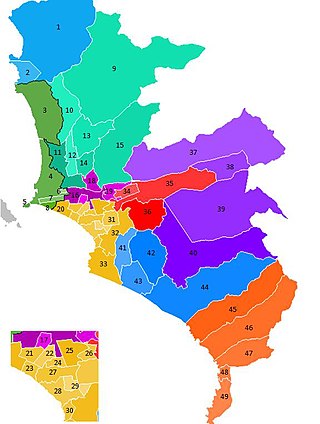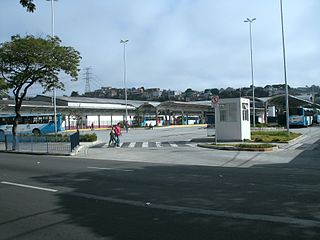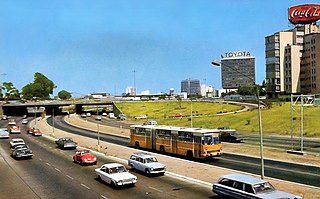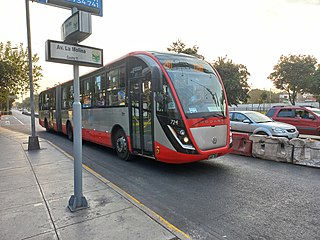
Lima, founded in 1535 as the Ciudad de los Reyes, is the capital and largest city of Peru. It is located in the valleys of the Chillón, Rímac and Lurín Rivers, in the desert zone of the central coastal part of the country, overlooking the Pacific Ocean. The city is considered the political, cultural, financial and commercial center of Peru. Due to its geostrategic importance, the Globalization and World Cities Research Network has categorized it as a "beta" tier city. Jurisdictionally, the metropolis extends mainly within the province of Lima and in a smaller portion, to the west, within the Constitutional Province of Callao, where the seaport and the Jorge Chávez Airport are located. Both provinces have regional autonomy since 2002.

The Lima and Callao Metro is a rapid transit system that serves the cities of Lima and Callao, which make up the Lima metropolitan area. The existing metro lines currently link the district of Villa El Salvador in the south of Lima with San Juan de Lurigancho in the northeast of the city, as well as a 5 km (3.1 mi) segment in the east of the metro area. Furthermore, there are four additional lines planned for the network.
The Rímac River is located in western Peru and is the most important source of potable water for the Lima and Callao Metropolitan Area. It belongs to the Pacific Slope, into which it flows after bathing the cities of Lima and Callao, together with the Chillón River, to the north, and the Lurín River, to the south. It is 204 km long and has a basin of 3,312 km², of which 2,237.2 km² is a humid basin. The basin has a total of 191 lagoons, of which only 89 have been studied. The river begins in the highlands of the Huarochirí Province in the Lima Region and its mouth is located in Callao, near Jorge Chávez International Airport.

The Lima Metropolitan Area is an area formed by the conurbation of the Peruvian provinces of Lima and Callao. It is the largest of the metropolitan areas of Peru, the seventh largest in the Americas, the fourth largest in Latin America, and among the thirty largest in the world. The conurbation process started to be evident in the 1980s.

The Historic Centre of Lima is the historic city centre of the city of Lima, the capital of Peru. Located in the city's districts of Lima and Rímac, both in the Rímac Valley, it consists of two areas: the first is the Monumental Zone established by the Peruvian government in 1972, and the second one—contained within the first one—is the World Heritage Site established by UNESCO in 1988, whose buildings are marked with the organisation's black-and-white shield.

The Tren Suburbano is an electric suburban rail system in Mexico City. It is operated by Ferrocarriles Suburbanos with concessioned trains from Construcciones y Auxiliar de Ferrocarriles (CAF). It was designed to complement the extensive Mexico City metro system, Latin America's largest and busiest urban rail network.

Metropolitano is a bus rapid transit system serving the city of Lima, Peru. Its construction began in the year 2006.
Public transport in Lima consists of buses, minibuses, taxis, and mototaxis. Micros are the most common means of public transportation in Lima and many other cities in Peru. There are also more than 100 kilometres (62 mi) of cycle paths in the city.

Marisa Glave Remy is a Peruvian sociologist and politician. She served in the Peruvian Congress from 2016 to 2019. Previously, she was Lima City Councilwoman, and a founding member of the Earth and Freedom movement, currently named Broad Front for Justice, Liberty and Life.

Guarulhos–São Paulo Metropolitan Corridor is a 12.3 km (7.6 mi) long bus corridor, with 3 bus terminals and 19 bus stops. When concluded, it will be 20 km (12 mi) long, with 5 bus terminals, and will attend approximately 100,000 daily passengers.

Saleh Carlos Salvador Heresi Chicoma is a Peruvian lawyer and politician. Throughout his political career, he served as mayor of San Miguel from 2003 to 2014, member of the Peruvian Congress from 2016 to 2020, and Minister of Justice and Human Rights at the start of Martín Vizcarra administration, in 2018.

A centro de transferencia modal, is a type of transport hub found mainly in Mexico City. Locally known as paraderos, these intermodal passenger transport stations allow commuters to transfer between different modes of public transit, generally between rail and bus systems. In Mexico City, their operations are supervised by Organismo Regulador de Transporte (ORT). Since 14 December 2010, the hubs became part of a decentralized organization. Out of the 40 operative CETRAMs existing in the city, 33 are found adjacent to Mexico City Metro stations.

The National Urban Transport Company of Peru, better known by its initials, ENATRU, was a state company in charge of urban transport in different departments of Peru established under the country's left-wing military government. It existed between 1975 and 1992.

The Lima Tramway was a mass transportation system that serviced the city of Lima, as well as then neighbouring Callao, Magdalena del Mar, Miraflores, Barranco and Chorrillos, inaugurated in 1878 and closed in 1965.

The Integrated Transport System for Lima and Callao is an urban public transportation system that operates in the Lima metropolitan area, made up of the Peruvian cities of Lima and Callao. Its administration is in charge of the Urban Transport Authority (ATU).

Jirón Rufino Torrico, formerly known as Jirón Arica, is a major street in the Damero de Pizarro, located in the historic centre of Lima, Peru. The street starts before its intersection with the Jirón Conde de Superunda, parallel to the Prolongación Tacna, and continues until it reaches Inca Garcilaso de la Vega Avenue.

The complementary corridors are a bus transit system that serves the metropolitan area of Lima and Callao. It is a network of bus systems that cover the main avenues of the metropolitan area.















